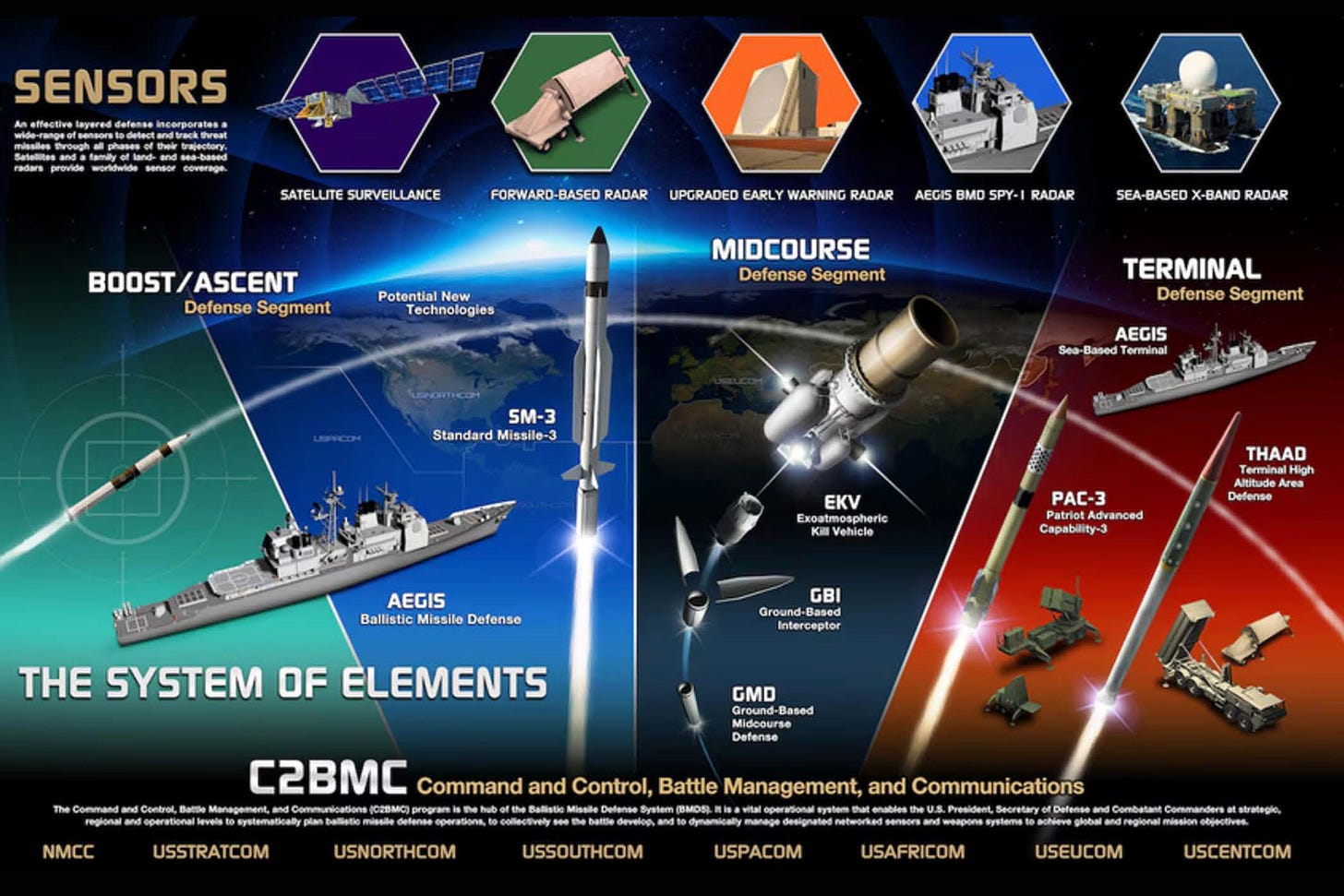By Daniel Wallman & Aidan Daoussis
Golden Dome is a next-generation defense system designed to protect the U.S. from missile threats. It will identify incoming missile threats, calculate their trajectory, and take measures to neutralize them. Aligned with President Trump's vision of peace through strength, Golden Dome enhances America's defense capabilities.
To succeed, Golden Dome must integrate the best of both defense and commercial industries. This collaboration will ensure the system remains effective and scalable as new technologies emerge. Golden Dome will rely on combat-tested systems while incorporating innovations to stay ahead of future threats. By combining established technologies with cutting edge advancements, it will provide reliable protection for the US homeland.
The system will offer immediate protection and expand its capabilities over time. Continuous innovation will strengthen the defense shield, ensuring its effectiveness against evolving threats. Golden Dome is an investment in the future of national security. By uniting government, industry, and allies, the U.S. will maintain a powerful defense against threats for years to come.
Missile Defense Today
The United States has made a significant investment in a missile defense architecture. To protect the homeland, the United States has an operational system known as Ground Based Midcourse Defense (GMD). GMD involves a network of sensors that provide data to a fire control system. When a threat is detected, a three-stage, solid-fuel ground-based interceptor is launched. This interceptor uses onboard sensors to track and kinetically intercept the incoming missile
The US’s missile defense integrates advanced technologies for detection, tracking, interception, and battle management. These capabilities are described below.
Command, Control, Battle Management, and Communications (C2BMC)
C2BMC serves as the core system that integrates missile defense operations, providing data fusion, threat analysis, and coordination between various defense assets like interceptors, sensors, and radars
Active Interceptors
Ground-Based Interceptors (GBI): Deployed in Alaska and California, they target long-range missiles during the midcourse phase.
Terminal High Altitude Area Defense (THAAD): Designed for terminal-phase interception, it is effective against short- to medium-range missiles.
Aegis Ballistic Missile Defense: Deployed on Navy ships and some land-based sites, Aegis uses Standard Missile interceptors (SM-3, SM-6) for midcourse and terminal-phase threats.
Patriot Advanced Capability (PAC-3): A mobile system designed to intercept short-range missiles and aircraft.
Active Early Missile Warning Systems
Space-Based Infrared System (SBIRS): A satellite constellation that detects missile launches via infrared sensors, providing global early warning.
Long Range Discrimination Radar (LRDR): A radar system based in Alaska, used to track and discriminate against ICBMs and other ballistic threats during midcourse.
Sea-Based X-Band (SBX): SBX is an advanced sea-mobile radar that provides precision midcourse tracking and discrimination capabilities.

Why Golden Dome is Needed: The Threats
The Golden Dome initiative addresses a rapidly evolving missile threat environment, where adversaries are deploying increasingly sophisticated and difficult-to-counter technologies. The current landscape includes:
Why Traditional Defenses Are Struggling
Traditional missile defenses target predictable trajectories. Emerging threats require a multi-layered approach—exactly what Golden Dome delivers.
Golden Dome Requires New Capabilities
Select overview of advanced systems in development:
Next Generation Interceptor (NGI): Features multiple kill vehicles, improved system survivability, and increased performance against North Korea and Iran's threats.
Next Gen OPIR GEO: An upgrade to SBIRS, with better infrared sensors for enhanced missile detection.
Missile Defense Radar (MDR): Advanced radar improving tracking and discrimination capabilities.
Proliferated Warfighter Space Architecture (PWSA): Provides tracking data for missile defense, including Space-Based Kill Assessment (SKA) sensors.
Directed Energy Systems: Research into using lasers or other directed energy weapons to intercept missiles during their boost phase
COORDINATION ACROSS DOD: BOTH A CHALLENGE AND OPPORTUNITY
The development of a robust missile defense system in the United States relies heavily on cross-organizational coordination among the Missile Defense Agency (MDA), the U.S. Space Force, and various other defense and intelligence agencies. By pooling expertise and resources, these entities work together to create a "Golden Dome" of protection for the nation.
The MDA leads the integration of missile defense systems, while the Space Force provides vital space-based assets for early detection and tracking of missile threats. Other agencies, including the Department of Defense, intelligence agencies, and civilian organizations, contribute their specialized knowledge in areas like radar systems, communication infrastructure, and cyber defense. This collaborative effort ensures a cohesive, multi-layered approach that enhances the U.S.'s ability to detect, intercept, and neutralize missile threats across all domains, creating a comprehensive defense shield for the country
POTENTIAL INDUSTRY PARTICIPANTS
GEOPOLITICAL & STRATEGIC IMPLICATIONS
Golden Dome is more than a missile defense system—it reshapes global security dynamics:
Enhanced U.S. and Allied Defense: Strengthens U.S. homeland security against missile threats and fosters integration with allied systems like those of Japan, South Korea, and NATO, creating a unified global defense network.
MAD Doctrine Challenges: By neutralizing strategic missile threats, Golden Dome could undermine the Mutual Assured Destruction (MAD) doctrine, potentially sparking arms races with adversaries like Russia and China.
Space-Based Vulnerabilities: Its reliance on satellites increases risks of anti-satellite attacks from nations like China and Russia, requiring hardened space infrastructure and active defense measures.
Regional Security Shifts:
In Asia-Pacific, it counters China’s missile capabilities, reassuring allies like Japan and South Korea.
In the Middle East, it could diminish Iran’s missile deterrence, altering regional power balances.
Global Cooperation Opportunity: Encourages joint missile defense efforts among U.S. allies, promoting stability but necessitating careful management to avoid escalation.
STRATEGIC OUTLOOK
Advancing Missile Defense While Navigating Global Security Challenges
The Golden Dome is a bold step towards next-generation missile defense, but its success hinges on careful strategic implementations. While it can eliminate emerging threats and improve global security, it will also accelerate military rivalry in missile and space combat.
Coping with geopolitical tensions, arms control arrangements, and cyber threats will be crucial in ensuring that Golden Dome strengthens U.S. security without triggering destabilizing countermeasures.
Through technological innovation, international cooperation, and strategic foresight, Golden Dome can redefine missile defense for the 21st century, ensuring that America and its allies are defended against the next generation of missile threats

















